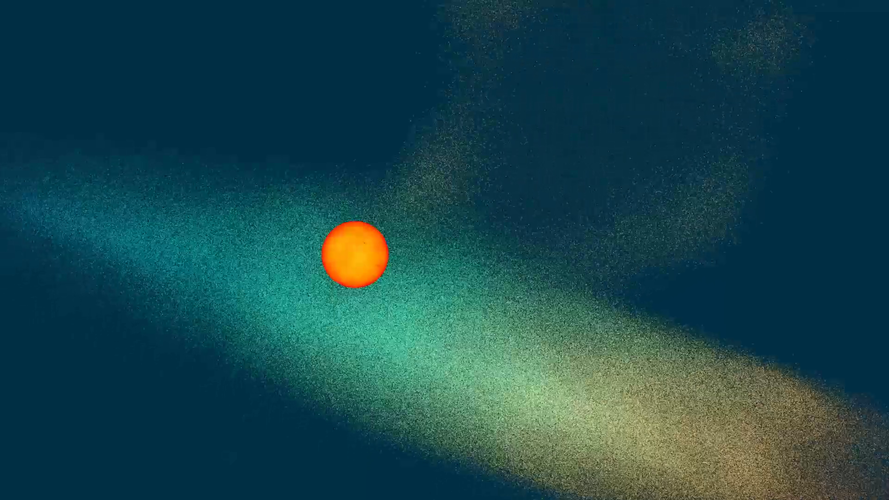
One of the major products to come out of Gaia’s 2022 data release was a database of the intrinsic properties of hundreds of millions of stars. These parameters include how hot they are, how big they are, and what masses they contain. Gaia also takes exceptionally accurate readings of a star’s apparent brightness, as seen from Earth, and its colour. It also records the star’s precise distance. Turning those basic observational characteristics into the intrinsic properties of a star can reveal how stars evolve throughout their long life cycles. The classical way of showing this is through the Hertzsprung-Russell (HR) diagram, which is derived in this animation, before showing the evolutionary path of a star like our Sun.
The graph first organises the stars using Gaia observations of observed magnitude and colour. Then, the distance information is used (parallax) to transform the observed magnitude into brightness. The colour and luminosity information is then corrected for dust between us and the stars. Finally the intrinsic colour is transformed to temperature.
A selection of solar-mass stars with the same chemical composition of the Sun is then highlighted in the orange track. This sequence describes most of the lifetime of a star that is almost identical to the Sun. The Sun is then illustrated at its current age of about 4.6 billion years, and the evolutionary pathway it will follow given that a star’s temperatures and luminosity varies with age as it burns through its fuel. Our Sun will reach a maximum temperature at approximately eight billion years of age, then it will cool down and move right along this diagram while also slowly increasing in size. It becomes a red giant at around 10-11 billion years of age, and then rapidly increases significantly in size. The end of the life of the Sun happens shortly after, where it will eventually finish as a cool dim white dwarf.
For a more detailed description see https://youtu.be/Nf6kYYtkZpA
Acknowledgements: This animation was produced by Laurent Rohrbasser (Univ. of Geneva, Geneva, Switzerland), Krzysztof Nienartowicz (Sednai, Geneva, Switzerland), in collaboration with Orlagh Creevey (OCA, Nice, France), Laurent Eyer (Univ. of Geneva, Geneva, Switzerland), Celine Reyle (UTINAM, CNRS, Besancon, France)
Click here for original story, The life of a star
Source: ESA Top Multimedia